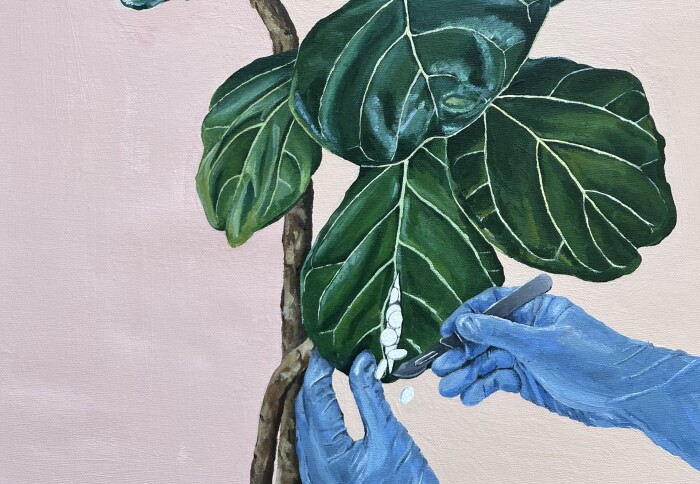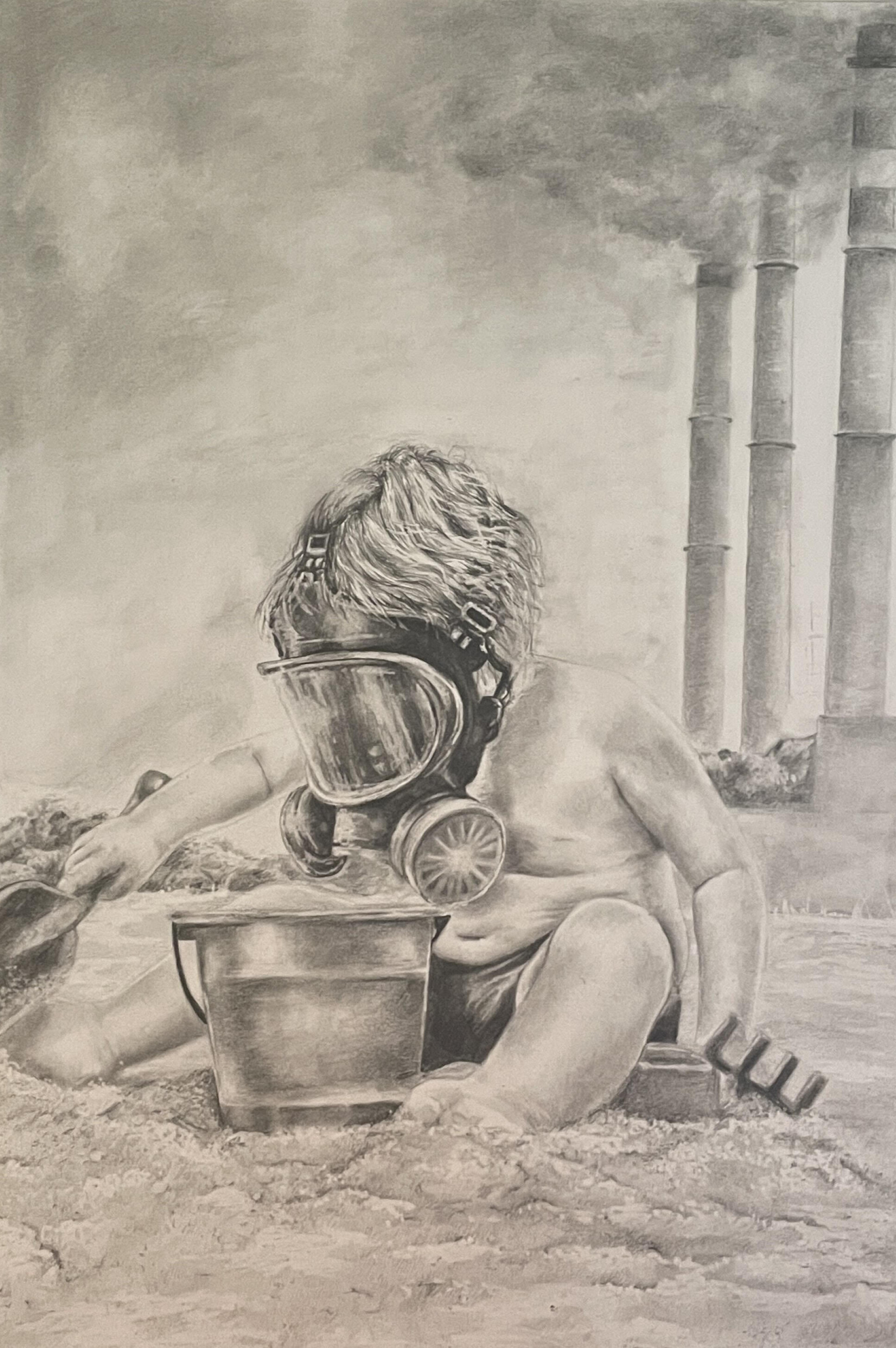Global Creative Competition crowns 2024 winners
by Jack Stewart

Flourish by Bailey Johnson
The third Global Creative Competition saw medical students from around the globe share creative responses to the theme: Healthy Planet Healthy People.
The Global Creative Competition was originally launched in 2020 by MEdIC (the Medical Education Innovation and Research Centre). MEdIC is Imperial College London’s translational centre which uniquely brings together medical education, community needs and health policy into innovation and research that positively impacts society.
This year’s awards, hosted by the Faculty of Medicine and Health at the University of Leeds, saw dozens of submissions from students all around the globe.
“This is my third time running the global creative competition, and it has been even more special as this year the competition focused on the urgent and interconnected issues of sustainability and global health. It has been a real pleasure collaborating with Imperial College London, bringing together our insights and experience across institutions from science and the arts." said Professor Sonia Kumar, Professor of Medical Education and Associate Dean of Community Engagement, University of Leeds
"The students yet again have won our hearts and minds, with their phenomenal creative talents and critical thinking and ideas about sustainability and their role in making our planet and indeed futures a healthy one.”
Dr Ravi Parekh, Director of MEdIC, said: "It has been such a pleasure to run this year's Global Creative Competition with the theme of 'Healthy Planet Healthy People' in collaboration with the University of Leeds. We have been overwhelmed with the quality of work submitted from across the globe and the obvious passion that exists for this important topic amongst our future healthcare practitioners. I would like to say a huge thank you to all the entrants, judges and organising committee for all the hard work in putting this year's competition together so successfully. I would also like to congratulate the finalists, whose entries are truly outstanding and it was a real delight to showcase their work at this year's ceremony."
Read about the winner and runners-up below:
Winner

Polluted Playground
Elen Evans
Cardiff University UK
Elen’s artwork focuses on the pressing environmental and societal threats posed by climate change.
As part of their submission Elen discussed as a future medical professional they will be encounter patients affected by climate change through changing disease patterns and an increase in respiratory diseases associated with increased pollution levels.
Elen explained: “The image of the child playing in the sand serves as a poignant reminder that the yet unborn generations remain both innocent and susceptible to the environmental repercussions of our current actions. It underscores our responsibility to prioritise sustainable consumption and production, the careful stewardship of natural resources, and the pursuit of harmony and prosperity in collaboration with the environment.”
Runners-up

We are born into reciprocity
Jamie Thompson
Northern Ontario School of Medicine University, Canada
“We Are Born Into Reciprocity” is a piece of Métis beadwork representing Indigenous knowledges on environmentalism, sustainability, and global health.
The Métis are an Indigenous people whose historical homelands include Canada's three Prairie Provinces, as well as parts of British Columbia, the Northwest Territories, Northwest Ontario and the northern United States.
Medical student Jamie explained she wants to enter the field of obstetrics and gynaecology and utilise her passion for preservation of Indigenous knowledge and LGBTQIA+ health. Her beadwork combines ideas of Indigenous sustainability and reciprocity through the imagery of a fetus in the “womb of the earth” – showcasing that we are nourished by the earth and have a responsibility to it.
“Métis beadwork was chosen to depict this image due to its significance as a traditional art medium, connecting concepts of matriarchy, land-based practices, and sustainability. The piece also depicts the four traditional plant medicines: Tobacco, sweetgrass, cedar, and sage (Clockwise from top left). These elements are meant to exemplify how Indigenous knowledges and ways of being, such as traditional sustainable harvesting, promote life on the land, responsible consumption, food security, sustainable communities, and more” explained Jamie.

A path
Fadhilah Ramadhina
Universitas Indonesia, Indonesia
Fadhilah’s painting was inspired by the profound words of an 80-year-old woman from Yogyakarta, Indonesia, who expressed her belief in correlation between sweeping and her afterlife.
"aku suka nyapu, biar mati nanti jalannya gampang."
(I like to sweep, so that when I die, my path to the afterlife will be easier)
When speaking about her painting Fadhilah said: “Her [the 80-year-old woman] statement serves as a reminder that every action we take in life holds the potential to shape not only our present but also our afterlife, underscores the interconnection of our actions and their impact. By maintaining a clean environment, we not only contribute to the well-being of our planet but also our own health. Additionally, the act of sweeping itself embodies physical activity, promoting a healthy lifestyle even in its simplest form.”

Drinking water for all
Jonas Nzanzu
Université Simon Kimbangu, Republic of Congo
Jonas submitted a video focusing on the importance of access to clean water.
Jonas said: “We face a great enemy of health which is pollution. more particularly water pollution which prevents us from guaranteeing access to drinking water for all.
“As a future health professional, I have a duty to guarantee good health to the world and through this film I hope that my voice will be heard in the fight against water pollution.”
Article text (excluding photos or graphics) © Imperial College London.
Photos and graphics subject to third party copyright used with permission or © Imperial College London.
Reporter
Jack Stewart
School of Public Health